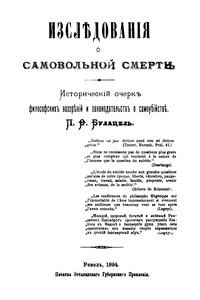В пучине бренного мира. Японское искусство и его коллекционер Сергей Китаев - [69]
E-8
List of Hokusai hanging scrolls from Kitaev’s guide to the exhibition of Japanese painting in St. Petersburg
1905. Private Collection, Moscow.
The first exhibition provoked a flurry of newspaper announcements, reviews and responses. It was preceded by public events and lectures. On November 4 (16), Kitaev showed selected paintings and talked about Japanese art in a high-profile event called Moussard Mondays. The newspaper Syn Otechestva (The Son of the Fatherland) reported: “On the 4th of November, a very lively artistic evening took place in The Salt Town. It is known as Moussard Mondays. Gathered were the chairman, Duke Leuchtenberg, venerated older members such as Professors Lagorio, Karazin, Musin-Pushkin and others. That evening, a Lieutenant Kitaev, who has just returned from Japan, where he brought together a rich collection of Japanese art during his four-year-long stay, showed paintings of Japanese artists and talked about the emergence and development of artistry in that country… The evening was completed by a friendly supper with numerous toasts[225].” The Mussard Mondays, founded in the nineteenth century by Evgeny Mussard, a former secretary to Grand Duchess Maria Nikolaevna, was an aristocratic charitable society made up of collectors, patrons of the arts and benefactors of artists and their families.
Another well-attended event to publicize the upcoming exhibition was a series of three lectures delivered by Kitaev about Japanese life and art with the demonstration of glass slides using a magic lantern. According to the newspaper Novoe Vremya (The New Times), the lectures were attended by a big crowd, including Admiral Pavel P. Tyrtov, former commodore of the Russian Pacific fleet then head of the Naval Ministry; Leonid Maikov, vice-president of the Academy of Sciences; Count Ivan Tolstoy, vice-president of the Academy of Arts; Dmitry V. Grigorovich, director of the Museum of the Society for Promotion of the Arts and other dignitaries[226]. This list of the prominent figures of Russian art, science and the imperial navy who attended a lecture about Japan and its art is rather impressive by itself, but if we recall that the lecturer was a thirty-two-year-old naval lieutenant, it looks more unusual. It is reasonable to conclude that Kitaev was wealthy and well-connected at the highest levels.
The next day, the same newspaper gave more details about the preparation of the exhibition: “Among outstanding works, there will be shown paintings of the Shijо̄, Kishi, Ukiyo-e, Kano and other artistic schools[227].” In a letter written twenty years later, Kitaev would mention the Tosa school – “these artists I used to buy in Kyoto” – and specified that, among the Kano artists, he had several works by Kano Tan’yū (1602–1674)[228].
Five days after the Moussard Mondays event, the local newspaper reminded its readers: “The Japanese exhibition is to be opened on Sunday, the 1st of December, at 10 a.m. It is organized in the Titian and Raphael Halls of the Academy of Arts, and numbers 283 entries. Some of these exhibits include more than one hundred objects (prints, caricatures and colored photographs illustrating Japanese life). All the preparations are finished. The exhibition consists of three parts: paintings, sketches and drawings, and prints[229].” Within a fortnight, a daily gossip column placed the exhibition first in the lineup of what’s on: “Have you seen the Japanese? Listened to the Italians? Watched Duse? Read about the Nelidov audience with the sultan? – These are our hot questions[230].” Instead of closing the exhibition after two weeks, as planned, Kitaev enhanced it with additional works and got permission for its extension until the new year (Gregorian: January 13). The artist Anna Ostroumova-Lebedeva (1871–1955), then a student at the Imperial Academy of Arts and later one of the main proponents of Japonism in Russia, recalls the transformative effect of this exhibition many years later in her memoirs: “Don’t remember exactly, but it could be 1896, there was the first Japanese exhibition organized by Kitaev in the Academy. I was totally smitten… The works were hung on wooden partitions, without glass, in huge numbers, down to the floor”[231].
E-9
The 1905 Exhibition
Kitaev delivers a lecture. Photo: courtesy of Nicholas Roerich Museum, New York.
Numerous rave reviews were published when the exhibition traveled to Moscow in February 1897, occupying several rooms of the Historical Museum on Red Square, and again in 1905, for the exhibition organized in Saint Petersburg immediately after the inglorious defeat of Russia in the Russo-Japanese War.
All this success among young artists and newspaper reports notwithstanding, it was not easy to organize these exhibitions. The third and last, in October 1905, took place during the difficult time of civil unrest called the First Russian Revolution; the month of October was marked by a nationwide political strike. Kitaev’s plan to sell his collection for the benefit of the public met with a complete lack of interest on the part of decision makers.

"Ясным осенним днем двое отдыхавших на лесной поляне увидели человека. Он нес чемодан и сумку. Когда вышел из леса и зашагал в сторону села Кресты, был уже налегке. Двое пошли искать спрятанный клад. Под одним из деревьев заметили кусок полиэтиленовой пленки. Разгребли прошлогодние пожелтевшие листья и рыхлую землю и обнаружили… книги. Много книг.".
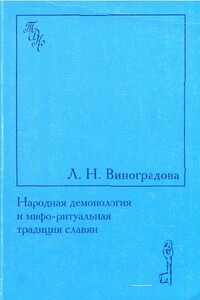
Книга посвящена «низшей» мифологии славян, т. е. народным поверьям о персонажах нечистой силы — русалках, ведьмах, домовых, о духе-любовнике и духах-прорицателях и т. п. Затрагиваются проблемы, связанные с трудностями идентификации демонологических персонажей и с разработкой методов сравнительного изучения демонологии разных славянских народов. При исследовании этого важнейшего фрагмента народной культуры главным для автора остается факт включенности мифологических персонажей во все сферы бытовой и обрядовой жизни традиционного общества.
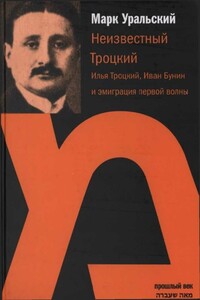
Марк Уральский — автор большого числа научно-публицистических работ и документальной прозы. Его новая книга посвящена истории жизни и литературно-общественной деятельности Ильи Марковича Троцкого (1879, Ромны — 1969, Нью-Йорк) — журналиста-«русскословца», затем эмигранта, активного деятеля ОРТ, чья личность в силу «политической неблагозвучности» фамилии долгое время оставалась в тени забвения. Между тем он является инициатором кампании за присуждение Ивану Бунину Нобелевской премии по литературе, автором многочисленных статей, представляющих сегодня ценнейшее собрание документов по истории Серебряного века и русской эмиграции «первой волны».
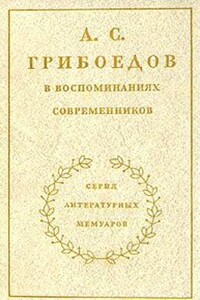
В сборник вошли наиболее значительные и достоверные воспоминания о великом русском писателе А. С. Грибоедове: С. Бегичева, П. Вяземского, А. Бестужева, В. Кюхельбекера, П. Каратыгина, рассказы друзей Грибоедова, собранные Д. Смирновым, и др.
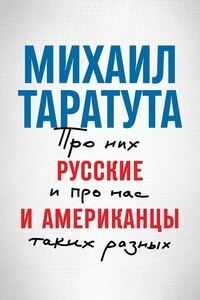
Эта книга о том, что делает нас русскими, а американцев – американцами. Чем мы отличаемся друг от друга в восприятии мира и себя? Как думаем и как реагируем на происходящее? И что сделало нас такими, какие мы есть? Известный журналист-международник Михаил Таратута провел в США 12 лет. Его программа «Америка с Михаилом Таратутой» во многом открывала нам эту страну. В книге автор показывает, как несходство исторических путей и культурных кодов русских и американцев определяет различия в быту, карьере, подходах к бизнесу и политике.
